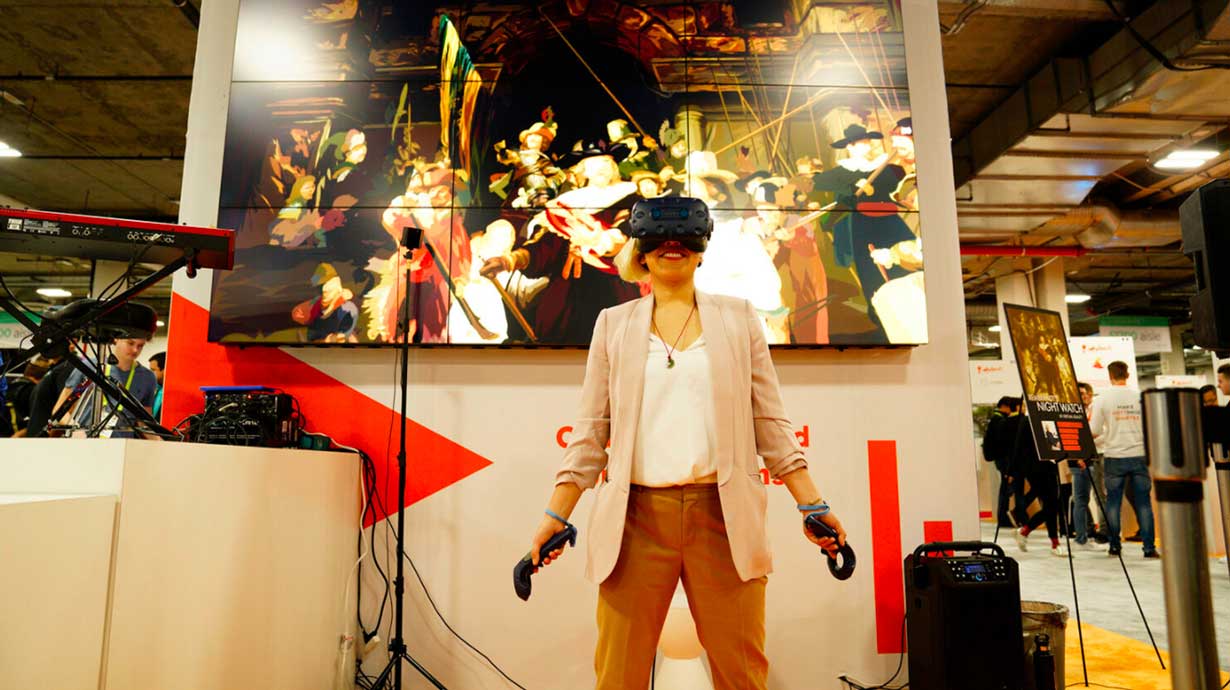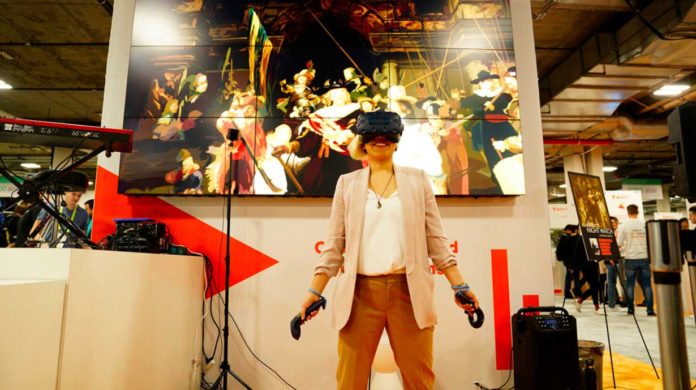
Virtual reality was the answer. After her first experience using VR with Google Spotlight Stories—a creative visual studio for virtual reality storytellers—Tse realized it was going to be “life-changing.”
Bringing VR art to the world
Around that time, Tse tried a program called Tilt Brush, a 3D-painting VR Google application, at a convention. She drew a dragon.
“That’s where it kind of clicked for me,” Tse says. “I can sculpt worlds. I can literally make worlds this way.”
Tse was one of the first artists to use Tilt Brush to make beautiful art, says Sarah Stumbo, who is familiar with Tse’s work as a colleague in the field. Stumbo is an interactive software engineer at Madison Square Garden Entertainment Corporation. Tse’s work has made an impact on software engineers and developers working on making tools like Google Tilt Brush and Adobe Aero, Stumbo says. Tse has also inspired the creation of Google Blocks and the Cartoon Network’s VR Lab.
“Not only is she driving the art world forward with her innovative artwork, but she’s also driving technology products forward,” Stumbo says.
David Liu was the director of VR under Viacom when he noticed Tse’s talent using Tilt Brush.
Tse is an extremely brilliant artist and illustrator, Liu says, noting her ability to create landscapes and spaces with emotions in a way that not many artists have in VR. “There was no one really setting any real bounds of what you can do in the VR art space,” Liu says. “A lot of folks who came after that have often looked to her work as inspiration.”
And now, a new reality
Tse applied for the nursery job on the nursery’s website, initially scared because it was so different from the work she had done before. But she wanted to work with nature and be integrated in the community. Recently a customer asked Tse what the difference was between a perennial and annual. Tse didn’t know the answer, so she made that infographic-style illustration in her sketchbook to learn her way through it—just as she’s learning to explain her vision for how art and technology can somehow preserve nature.
Tse hopes that by being able to speak to companies, she can craft a vision of what she wants the future to look like, and it can actually come to fruition.
“I’m in a place of absorbing as much information as possible about what nature needs, how it thrives, how it works with humans,” Tse says.
She’s also part of a growing number of her peers looking at ways technology can be used help sustain life in nature and counter the damage. Her friend Suzanne Leibrick is working with a group using depth cameras to target sonic waves at plants to shake pollen for fertilization. Others are using tech to rebuild coral reefs.
“A lot of my work is connecting, bridging, being a conduit of information and ideas,” Tse says. “I may not be actively making a product that merges tech and nature right now, but the cultivation of thought, education and understanding of both industries’ needs—this is just the beginning of the work I do.”
“You can use technology in a way that works with nature,” she says. “It doesn’t always have to go against it.”








